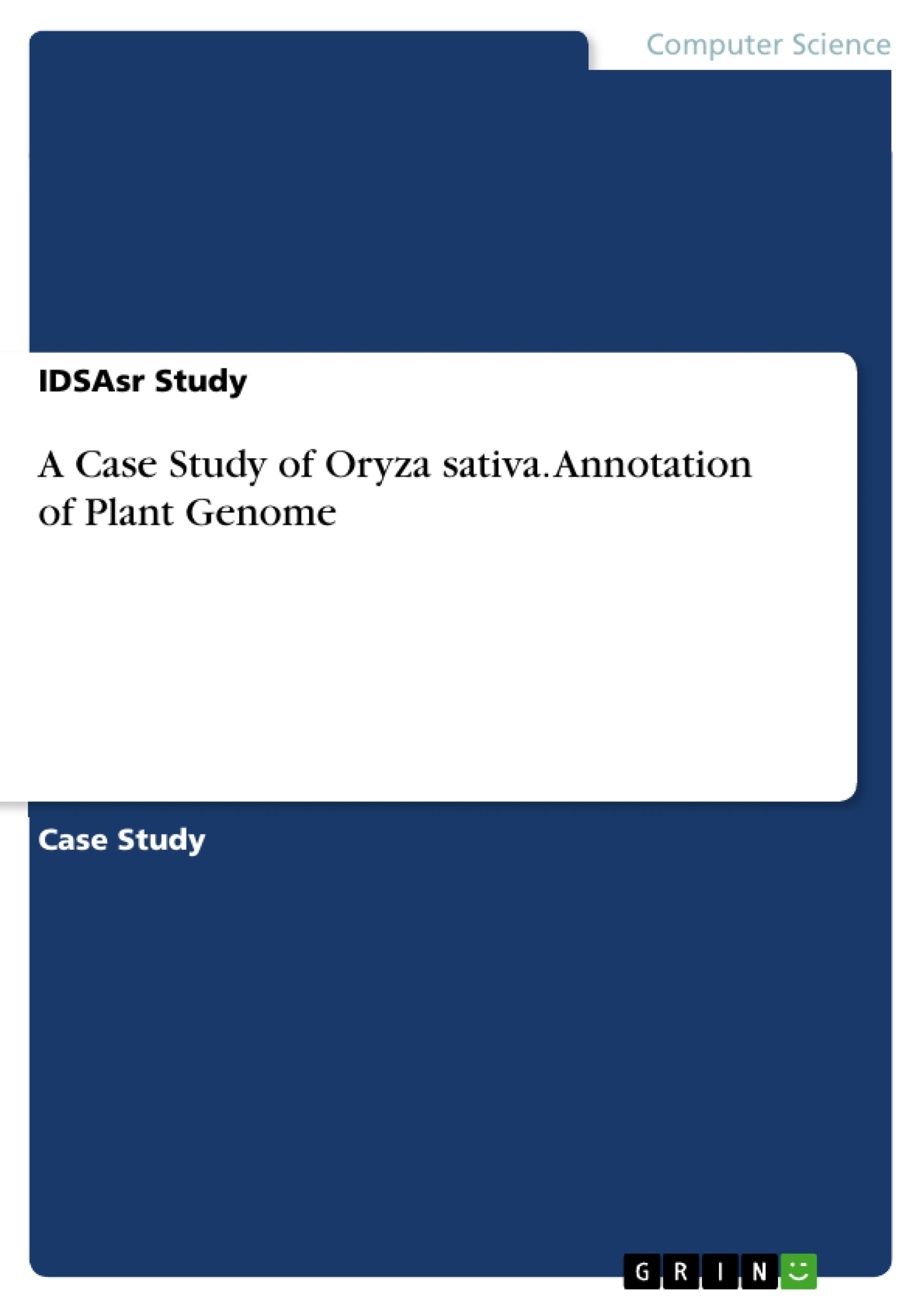Using Insilco analysis mode, the present study is an attempt to examine various characteristics conformation of senescence causing gene in rice. The two gene chosen were HCP and RR because, the interaction in between these two led to the onset of senescence in rice. Two gene that is HCP (Histidine-containing phosphor transfer protein 1) and RR (Two-component response regulator) are responsible for attaining the stage of senescence in rice.
Understanding their molecular and structural property will be going to let us closer to perform successful adjustments. Moreover, their specific property is also responsible for their specific interaction which led to generation of such signals that triggers senescence. Therefore, this analysis was aimed to understand the features of the two genes as well as their interaction by the means of computational technique.
Understanding the features, function and flow of gene will lead us to stabilized effective measure in order to get a beneficiary outcome while going for alteration in its characters. As the pure data for the structure conformation of the selected genes are not available so, we have at first, searched the most similar homolog of the query sequence and the search was based on similar sequence homology on the platform of local alignment tool. And further analysis was carried out on the base conformation of the most relevant homologs (structure/sequence) found.
We have analysed the query gene sequence by various dry lab analysis tool to explore its structural and molecular features with the motive to contribute a little knowledge for the sake of further studies to delay senescence in rice plant in order to increase grain productivity.
Rice is a perennial claim crop of the world. Besides satisfying the eager of energy rice, has also been known to support worlds trade economy. Hence, being a crop of such crucial importance its examinational study at genome level will serve in multiplying its production and quality to irrigate the burning crave of humanity. Likewise, the senescence gene of rice is responsible for its age duration. Hence, understanding its property at 360° will help us to modify or to alter its function in positive portion.
Inhaltsverzeichnis (Table of Contents)
- About Oryza Sativa Japonica
- Assembly
- Annotation
- Review Of Literature
- Methods And Methodology
- Selection of Sample Sequence
- HSP:
- RR.
- Tabulating the Sequence
- Performing Multiple Sequence Alignment (MSA).
- Scanning of Motif.
- Establishing Photogenic Relationship
- Prediction of Structure
- Constructing a 3D Model
- Mapping of Motifs
- Creating Protein-Protein Interaction Prediction
- Results And Discussion
- Multiple Sequence Alignment (MSA) Output
- Conclusion
Zielsetzung und Themenschwerpunkte (Objectives and Key Themes)
This study aims to examine the characteristics of senescence causing genes in rice using In Silico analysis methods. Specifically, it focuses on the interaction of HCP (Histidine-containing phosphor transfer protein 1) and RR (Two-component response regulator) genes, which are responsible for initiating senescence in rice plants. The study seeks to understand the molecular and structural properties of these genes and their interaction, which could lead to strategies for delaying senescence and increasing grain productivity.
- Molecular and structural characteristics of senescence genes (HCP and RR) in rice.
- Interaction between HCP and RR proteins in initiating senescence.
- Computational approaches for analyzing gene function and structure.
- Potential applications of the findings for improving rice productivity.
- Delve into plant genome annotation, gene families, and functional annotation.
Zusammenfassung der Kapitel (Chapter Summaries)
- About Oryza Sativa Japonica: Provides an introduction to rice as a globally significant crop and its importance in food security and trade. Emphasizes the role of senescence genes in rice aging and their potential for manipulation to enhance productivity.
- Assembly: Describes the process of assembling the genome sequence for Oryza sativa japonica, highlighting the challenges and techniques involved.
- Annotation: Explains the process of annotating the rice genome, which involves identifying and describing important regions within the sequence. This includes the identification of protein-coding genes and various types of non-coding RNAs.
- Review Of Literature: Provides a comprehensive overview of existing research on senescence genes in rice, including their molecular mechanisms, genetic regulation, and potential for manipulation.
- Methods And Methodology: Outlines the computational methods used to analyze the HCP and RR genes, covering sequence alignment, motif analysis, structure prediction, and protein-protein interaction prediction. This section delves into specific tools and techniques applied in the study.
Schlüsselwörter (Keywords)
The key focus areas of this study are senescence, gene interaction, plant genome annotation, plant ontologies, plant gene families, databases, genome annotation pipelines, functional annotation, and the annotation of repetitive sequences. It aims to identify and describe the functions of the HCP and RR genes involved in rice senescence. The study uses various computational tools to analyze the structure and function of these genes, aiming to contribute knowledge for further research in delaying senescence and increasing grain production.
- Quote paper
- IDSAsr Study (Author), 2020, A Case Study of Oryza sativa. Annotation of Plant Genome, Munich, GRIN Verlag, https://www.grin.com/document/925069



